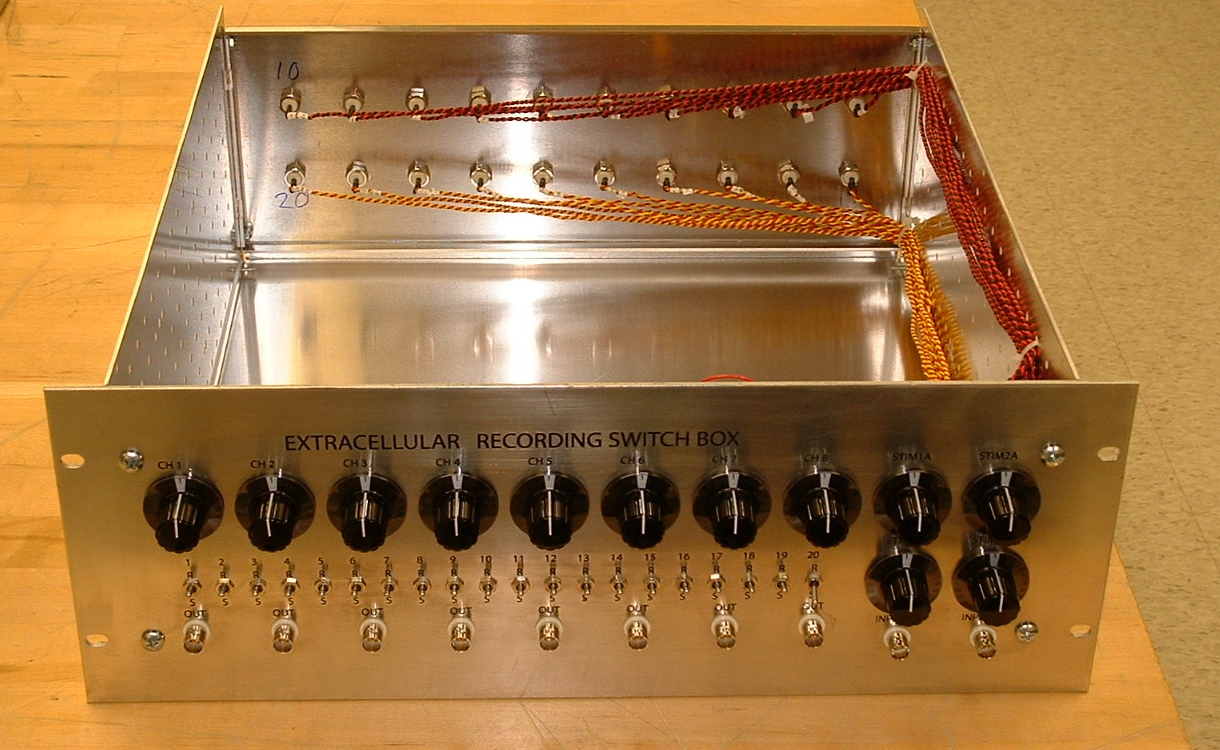Instrumentation Laboratory Project Page
Project: 20 Channel Switchbox
Department: Zoology
Primary Investigator: Dr.
Dawn Blitz
Purpose: I use the crab stomatogastric nervous system as a model system for studying plasticity of neural circuits. We perform many simultaneous intracellular (neuron and muscle) and extracellular (nerve) recordings. As we routinely place ~20 nerve recording electrodes but only have the capacity to record 8 simultaneously, we require the 20 channel switch boxes made by the instrumentation lab in order to be able to switch among the 20 recordings during an ongoing experiment, based on which ones we need to record at a particular time. As we are also performing intracellular recordings which are very sensitive to any vibrations, we cannot just plug and unplug our electrodes. The 20 channel switchbox allows us to smoothly change between recordings as many times as necessary without any disruption to other aspects of the experiment such as intracellular recordings. In addition, throughout the experiment we need to be able to stimulate nerves through the electrodes instead of recording them. The 20 channel switchbox allows us to stimulate up to 4 of any of the 20 electrodes and to change which 4 we stimulate throughout the course of the experiment. This flexibility is essential to our experiments.

| |
|
|
|
|
IL
Comment: Dr. Blitz
approached the Instrumentation Laboratory with an idea from a
previously used system design (at her prior university) for 2, 20
channel independent signal switching systems. She was looking to have
them redesigned and constructed by the Instrumentation Laboratory to be
used in her research laboratory. The previous design had some flaws in
it which provided for an inordinate amount of "cross talk" between the
channels that produced system instability, given that the signals in
her research lab experiments are in the 1-4 uV range. The
Instrumentation Laboratory took the original design and improved upon
it to reduce and\or eliminate the "cross-talk" by redesigning some of
the wiring paths and connections within the rack mount enclosure. The
system was tested and verified to be correct thru the use of an
Instrumentation Laboratory developed computer simulation program and
off the shelf hardware.
The previous design had an original price of $1,800 per system (plus
labor, estimated at $6,500 per system). The Instrumentation Laboratory
was able to provide 2 systems for a total cost of $3,231.15 (for both
systems, a savings of approximately $11,500); allowing the researcher
to stretch their startup funds for their research laboratory.
Cost to researcher: $3231.15

